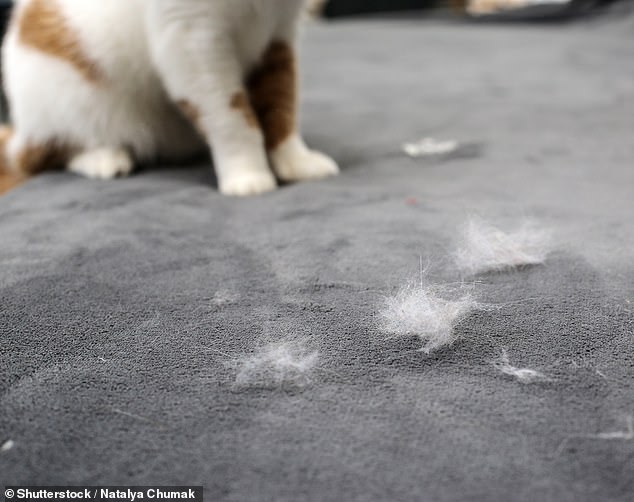Crimes could soon be solved using cat DNA found at crime scenes with new method
>
- Statically charged pet cat hairs stick to their owners’ clothing easily
Criminals could soon be caught if they own cats, using a new method of DNA testing.
About a quarter of UK households own cats, and their electrically charged pet hair easily sticks to their owners’ clothes.
This means that a criminal cat owner could theoretically be placed at a crime scene using cat hair pulled from his or her clothing.
But cat hair is not as good as the criminal’s DNA, which contains repeated stretches of genetic code called “short tandem repeats” (STRs) – found in a type of DNA called nuclear DNA.
There is not enough nuclear DNA to detect these suspicious transactions in cat hair, because the root of cat hair that contains this type of DNA is usually dry.

About a quarter of UK households own a cat, and their electrically charged pet hair easily sticks to the owner’s clothes (archive photo)
However, cat hair is a better source of a type of DNA called mitochondrial DNA, which is passed down through females.
But this is usually broken down into fragments within the hair, providing an incomplete read of the DNA.
Since all domestic cats share the same small number of ancestors, a typical sample may belong to thousands of different cats.
However, scientists have now made a breakthrough that could revolutionize cold cases such as unsolved murders, by matching cat hair to a specific cat.
Researchers can now take fragments of mitochondrial DNA and make billions more of them, using a PCR test somewhat similar to the one used for Covid.
Each piece shows the same genetic code from a cat’s mitochondrial DNA, but each looks like an incomplete copy.
However, when these parts are multiplied by the billions, technology that might otherwise struggle with just a few copies can identify the genetic code shared between the parts.
This recreates the complete mitochondrial DNA of cats, something that was not possible before.

A criminal cat owner could theoretically be located at a crime scene using cat hair pulled from his clothes (archive photo)
It has been proven successful in identifying the remains of a lost cat, using DNA taken from its hair, which was verified using the cat’s son.
Dr John Wetton, a member of the team behind the discovery, from the University of Leicester, said: ‘Cat hair has been overlooked at crime scenes until now, because cats have similar DNA.’
“But this method can identify individual cats, even decades after their death, so it could be invaluable in cold cases.”
“In a previous murder case, we applied the above technique but were lucky because the suspect’s cat had an uncommon mitochondrial variant, as most cat breeds are indistinguishable from each other.
“But with our new approach, almost every cat has a rare type of DNA, so testing would certainly be useful if hair were found.”
The research was published in the journal Forensic Science International: Genetics.
The new technique is said to be about 10 times more discriminating than a previously used technique that only looked at a short section of cat hair DNA.
Professor Mark Jobling, co-author of the study from the University of Leicester, said: “In criminal cases where there is no human DNA available for testing, pet hair is a valuable source of linking evidence, and our method makes it that much more important.” strong.
“The same approach can also be applied to other species, especially dogs.”
(tags for translation) Daily Mail
